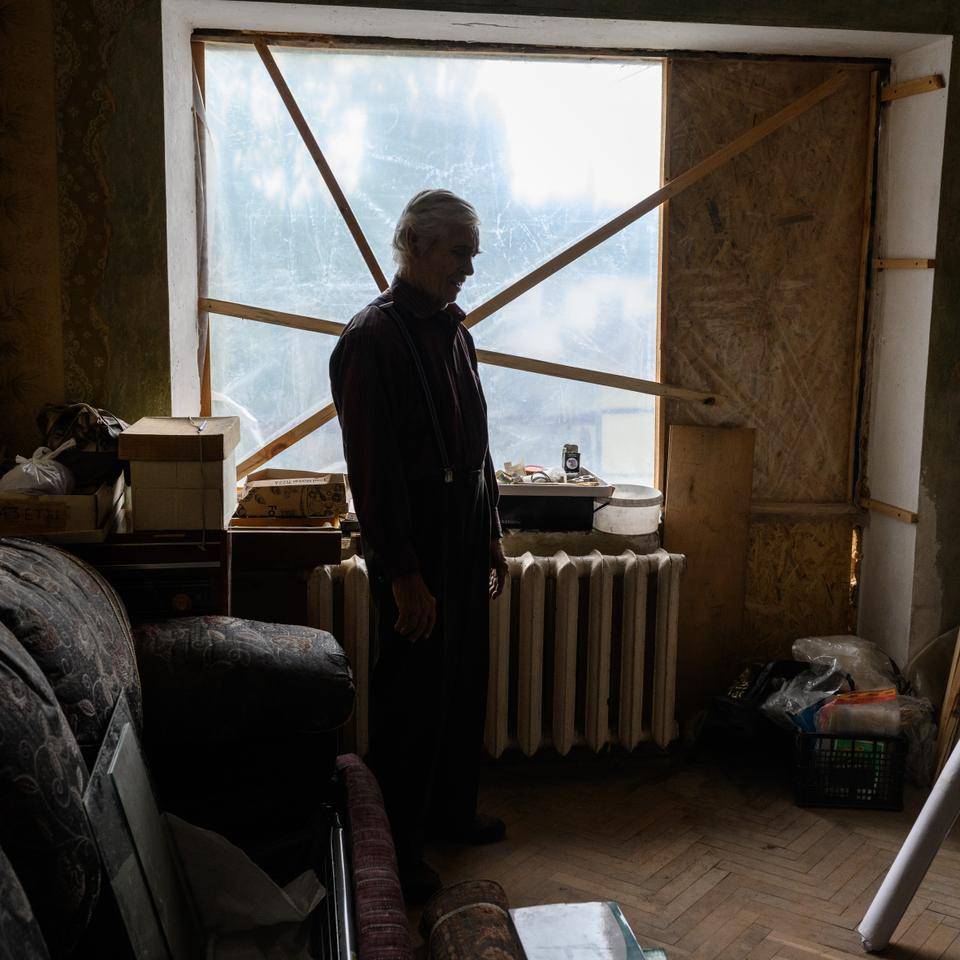Kyiv’s Long Nights: Fear Builds as Putin’s Bombardment Continues
Night after night, the capital of Ukraine trembles under Russian air raids. Residents speak of a growing anxiety, as sleep-deprived families huddle in corridors, bathrooms, and makeshift shelters while missiles and drones fill the dark skies with thunder. With casualties increasing and the city’s infrastructure battered, a collective unease hangs over daily life. But rather than capitulate, a steadfast resilience binds Kyiv’s people, despite Putin’s harsh campaign aimed at breaking their spirits.
This June marked one of the deadliest bombardment phases since the Russian full-scale invasion began nearly three years ago. According to The Financial Times, more than 40 people were killed in Kyiv this month alone by relentless drone and missile assaults. One harrowing night on June 17 saw 175 Shahed-type drones and 14 cruise and ballistic missiles strike the city, killing 28 people, demolishing a nine-floor building, and claiming the lives of both civilians and emergency responders .
Ukrainian defenses, though increasingly strained, managed to intercept much of the barrage. In one dramatic session, 368 drones and missiles were launched in a single night—an onslaught that outpaced defense capacity and rattled those on the ground . The escalation highlights Russia's strategy: testing Ukraine’s air defenses with high-altitude Shahed drones laden with heavier payloads, a tactic that gradually weakens civilian morale and defense systems .
In apartments across Kyiv, families have adapted to a chilling new normal. Many forgo official shelters—opting instead for bathrooms or corridors within their homes, citing ease and restlessness . Others rely on underground metro stations or car parks, but the exhausting alarms and persistent strikes make restful sleep a rare luxury.
Anya, a 21-year-old student, has grown numb to the nightly chaos, barely lifting her head from bed during attacks, while her roommate navigates from room to room seeking safer zones . Psychologists warn of the steep cost: rising anxiety, disrupted risk assessments, and fatigue. One psychologist noted that citizens are now revisiting safer options, though deeply ingrained habits persist .
Darya Malyutina, a Kyiv-based teacher, describes nights filled with sirens and explosions that stretch on for hours—conditions that are pushing some families to the edge. “A few more nights like this and I feel like people are going to start leaving Kyiv again,” she warned .
It's not just neighborhoods under fire. Infrastructure such as the metro, power grid, and train networks have taken repeated hits. After drone barrages on June 6, metro lines linking the city's banks were damaged, forcing station closures and straining commuters . Vulnerable routes are increasingly targeted to amplify public strain, disrupt daily routines, and undermine civic confidence.
Electricity outages occasionally accompany missile attacks, as Russia methodically targets civilian systems such as energy and heating—another tactic consistent with wartime infrastructure degradation .
Ukraine’s air defense forces have scaled up, deploying Western-supplied Patriots, S-300 missiles, and other systems. Still, limited interception loads paint a dire picture. Anti-drone guns and short-range missiles comprise the first line of defense, but high-altitude attacks from Shahed variants often penetrate deeper into city airspace .
Equipped with limited interceptors, Ukraine's forces must ration responses—often allowing attacks through to minimize civilian casualties and strategic risk . Russia’s intensification of drone production—4,342 Shahed drones launched just in June—underscores the escalating nature of the threat .
Families are bearing the mental burden. Some keep pillows in bathrooms; others set aside vital supplies in case of evacuation. Parents prepare children for unpredictable nights, choosing inner hallways as less nerve-wracking than shelters .
Despite exhaustion, daily life persists. Cafés, markets, and offices continue with morning rituals, albeit with subdued energy . Children attend school; managers open shops; people cling to normalcy as a lifeline.
Relationships have deepened amidst shared fear. In nightly corridors, neighbors huddle together—sometimes strangers at first, but slowly forging solidarity under repeated crisis .
Global observers draw stark comparisons. Ukrainian civilians recount experiences reminiscent of World War II air campaigns. Reports mention families curling into bathtubs, mothers pacing hallways with children, and dozens of nights marred by sirens.
Ironically, the psychological fatigue intended by Russia's bombardment risks causing strategic miscalculations. While some Western commentators question how much longer citizens can stand, Ukrainian authorities urge endurance—arguing that yielding under pressure would satisfy Moscow's intent .
In an echo of Winston Churchill’s famous defiance, Kyiv clings to defiance: even under nightly terror, citizens choose to stay. A resident said, “When you face problems with your family, you don’t run—you sort them out,” framing the country’s collective trauma as a shared challenge worth enduring .
As the bombardment shifts into a grinding attrition campaign, Ukraine seeks more air-defense aid—from the U.S., Europe, and NATO allies. Enhanced interceptors and longer-range systems could help balance defense, but supply remains constrained and political support fragile.
International pressure grows. Prominent voices urge condemnation of civilian targeting and insist on diplomacy, sanctions, and military aid to reinforce resilience. Yet the daily reality remains stark: Kyiv endures its bombs, reliant on vigilance, solidarity, and unwavering determination.
Kyiv’s nights are now defined by a ritual of fright and resilience: alarms, scrambling, breathless waits in narrow shelters, and a return to morning light. While many residents express concern and fear, most are determined to stay—refusing to let terror shape their lives.
Putin’s campaign seems designed to "make Kyiv his dessert"—a dark figurative feast on Ukrainian fear and surrender. But Ukraine's capital tells a different story: one not of collapse, but of revival, unity, and human endurance. Whether this resilience can withstand future escalations depends on global support, Ukrainian air defenses, and the will of families who cling to hope in the midst of bombs.
As the nights stretch onward, Kyiv’s people remain steadfast, refusing to yield their city or spirit. Their defiance stands as both a challenge to Moscow’s tactics and a plea to the world—to bolster their defense and uphold their right to exist in peace.



